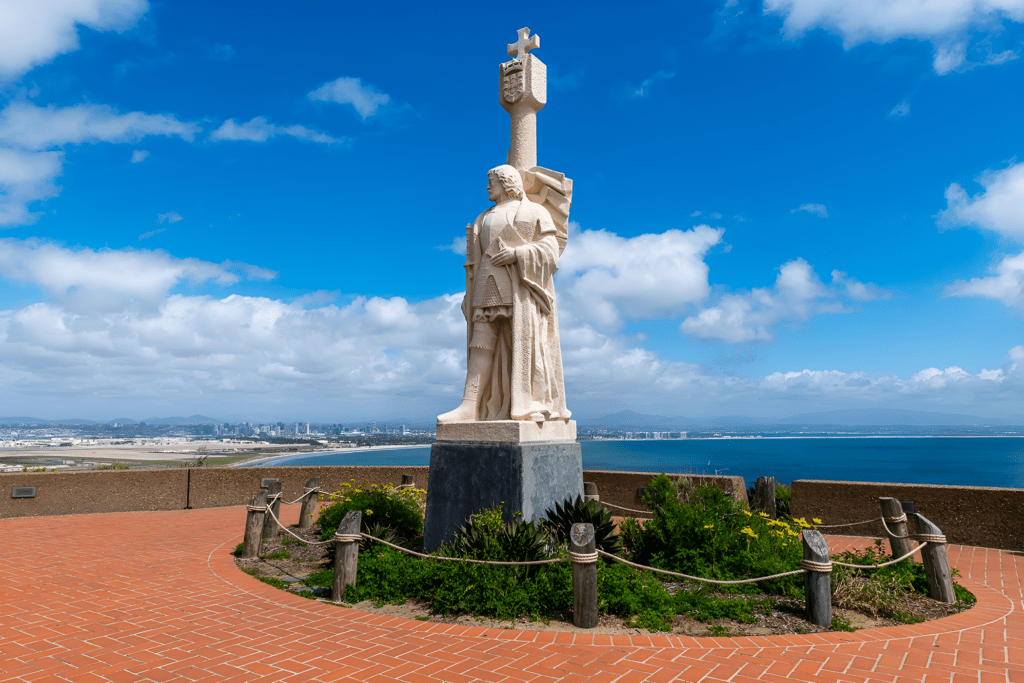Cabrillo National Monument is situated in San Diego, California, and commemorates Juan Rodríguez Cabrillo. He was the first European to explore the West Coast of the United States. Once there, it offers a pretty well-rounded experience of history and culture along with natural beauty. A trendy spot for locals and visitors alike, this event gets to show off the country’s melting pot of heritage in a natural, beautiful setting.
History of the Monument
The Cabrillo National Monument was established in 1913 to honour the landing of Juan Rodríguez Cabrillo on San Diego Bay in 1542. The first European to set foot on what eventually became the west coast of North America (and not be killed by whoever he met) was Cabrillo, who sailed from Spain as a pilot for Portugal. That moment was a turning point in the early days of exploration, and to make sure this critical period is remembered, the monument was established. In the bay, a massive statue of Cabrillo stands tall — a testament to its importance as a discovery.
The Visitor Experience
Cabrillo National Monument welcomes visitors with panoramic perspectives of the Pacific Ocean as they arrive. A range of activities at the park include historical exhibits, walking trails, and scenic overlooks. The visitor centre describes Cabrillo and his landing in San Diego, including background on the Kumeyaay and the Native American people who lived there long before Europeans showed up. Cabrillo JourneyThe visitor centre has plenty of info, maps, and a brief video on Cabrillo’s journey and the era.
The Old Point Loma Light
The Old Point Loma Lighthouse has become one of the most famous features of this monument. Constructed in 1855, the lighthouse operated until 1891, providing a guide for ships entering Hangard Bay. Now, it has been restored and can be revisited, where one may relive the life of a lighthouse keeper from the 19th century. The lighthouse is small, and visitors can climb up the narrow stairs to step inside and take in panoramic views of San Diego.
Tide Pools
Cabrillo National Monument boasts some of California’s best tide pools, making them a must-visit for nature lovers. Sea anemones to starfish find home among the rocky shorelines. The pools are secret windows to an underwater world only visible at low tide. The monument’s tide pools rank among the best in Southern California, attracting both curious tourists and marine biologists. Visitors are often led by park rangers who explain the one-of-a-kind ecosystems and how crucial it is to protect them.
Hiking Trails and Wildlife
Cabrillo National Monument boasts numerous hiking trails with vistas of the ocean and San Diego skyline. The moderate 2.5-mile round-trip Bayside Trail is the most popular and has plenty of great picture-taking spots along it. Hiking further, look out for pelicans and hawks near the coastline or even migrating whales in winter. Exploring the trails reveals California’s coastal beauty, where native plants thrive.
The Military History
Besides its historic significance, Cabrillo National Monument also highlights a military past. During World War II, the military actively used it for coastal defence. To this day, remnants of bunkers with gun batteries remain in place as a reminder of its strategic importance. You can also visit these military installations to discover much about the role they played in protecting the West Coast during the war effort. The bunkers are a reminder of San Diego’s military importance during this time.
Whale Watching
Winter is an exciting season at Cabrillo National Monument because it offers some of the finest whale watching. Visitors can see grey whales migrating from the overlook from December through March. They journey thousands of miles from the cold waters of Alaska to the warm Baja California ocean. Cabrillo’s high cliffs make it an ideal spot to watch large quantities fly overhead. Whale-watching season is often accompanied by spotting scopes and educational talks from park rangers.
Educational Programs
Cabrillo National Monument has several educational programs for students and visitors alike. The park provides local kids with hands-on training about the area’s natural history and ecology during educational field trips. Ranger-led programs offer a more in-depth appreciation of the monument’s natural and cultural values. Special events, including the Cabrillo Festival, honour the area’s heritage through re-enactments, music, and food.
Conservation and Preservation
It acts as a conservation effort monument. Park staff and volunteers actively protect wildlife and conserve the area’s rich history, drawing from their experience in managing the challenging ecosystem. All the tide pools, wildlife, and native plants are closely watched to help preserve them for generations to come. To protect the national park system for future generations, the National Park Service ensures its components remain unimpaired.

